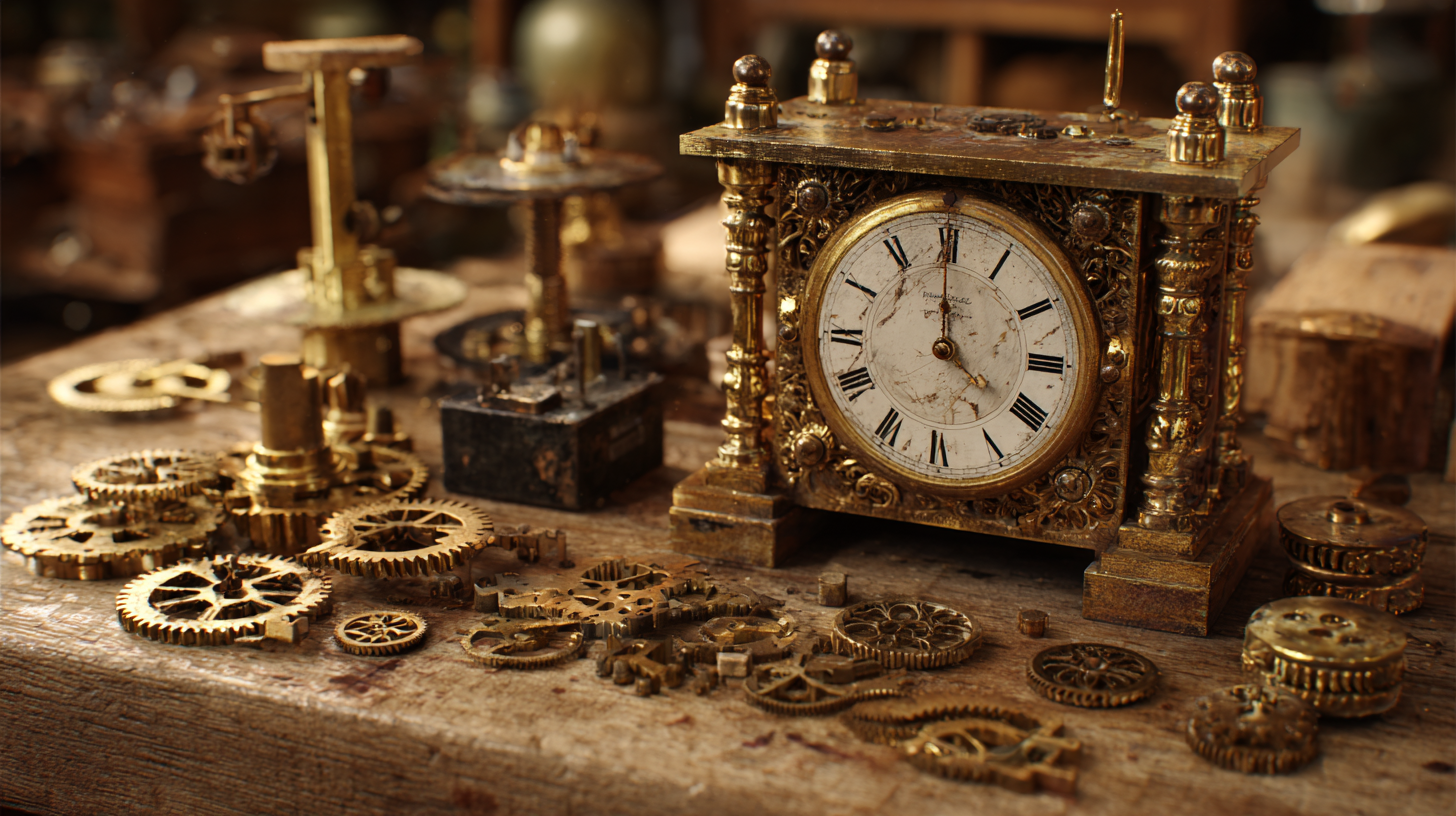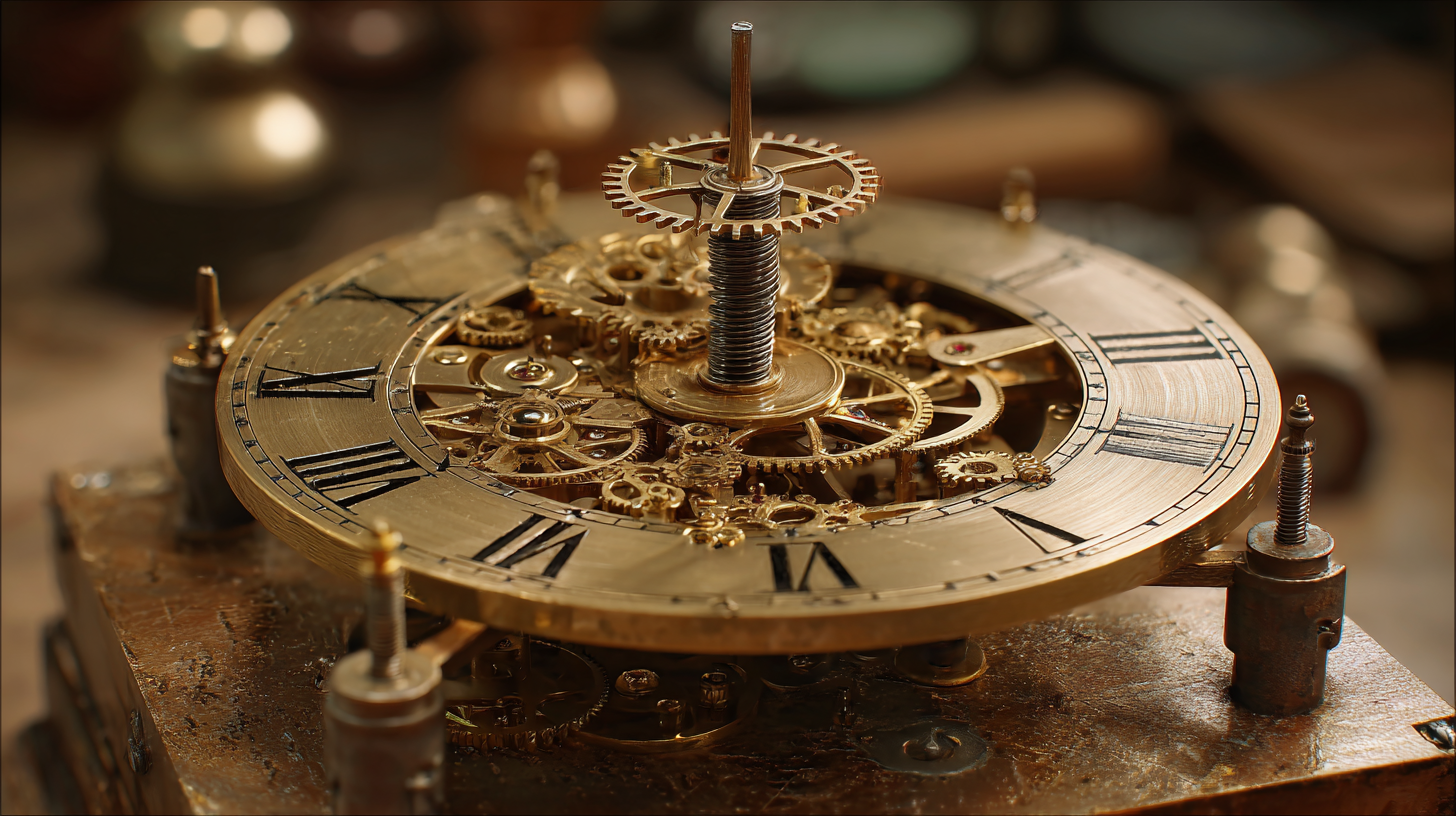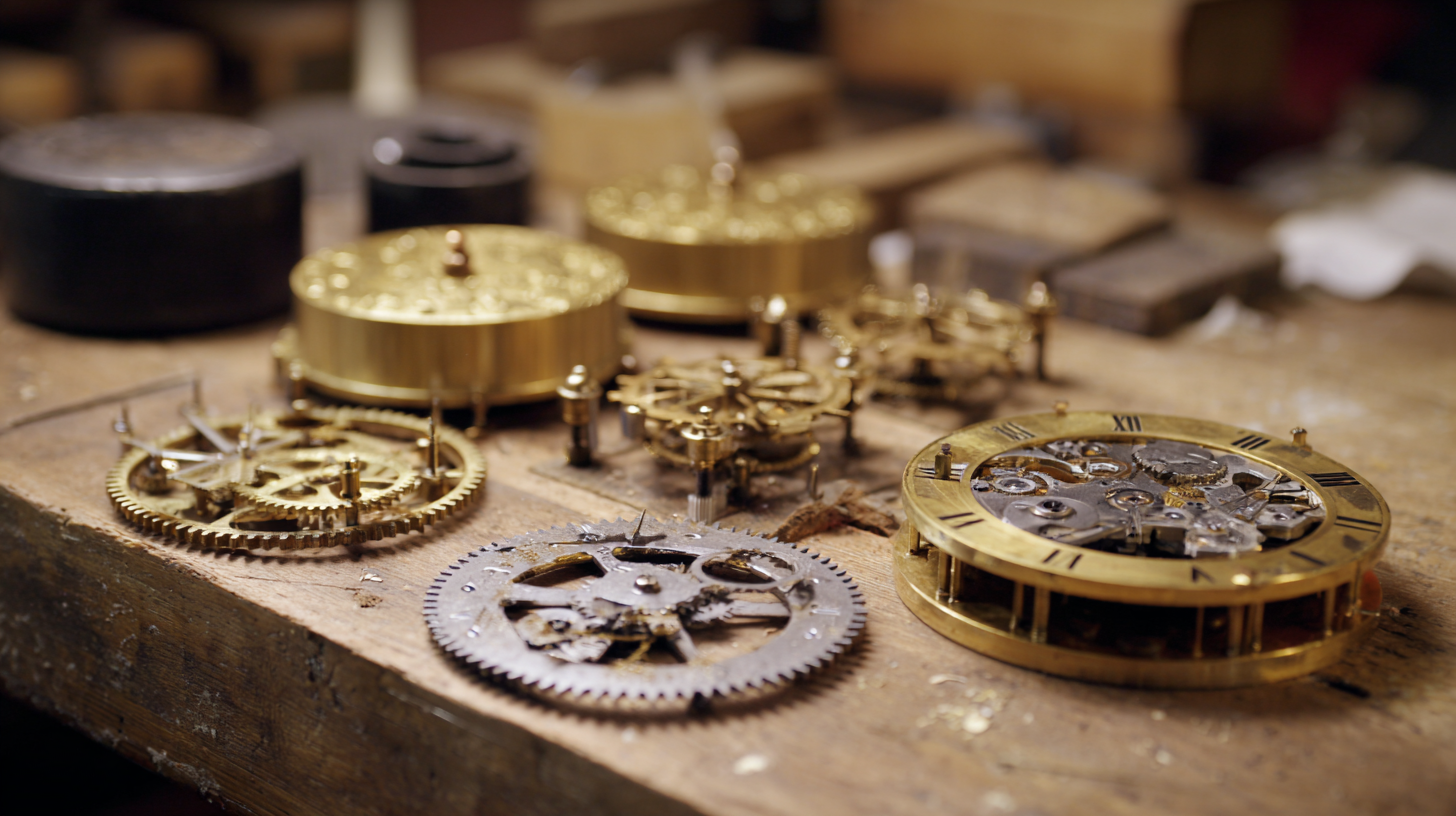When embarking on a restoration project for antique clocks, selecting the right antique clock parts is crucial to preserving the integrity and functionality of these cherished timepieces. Whether you are a seasoned restorer or a novice enthusiast, understanding the significance of each component—from movements and gears to hands and dials—can dramatically impact both the restoration outcome and the historical value of the clock. This blog will delve into practical solutions for selecting the appropriate antique clock parts, considering factors such as material authenticity, compatibility, and aesthetic alignment with the original design. By equipping yourself with the right knowledge and resources, you can ensure that your restoration project not only revives the clock but also honors its history and craftsmanship, creating a piece that can be treasured for generations to come.

When embarking on a restoration project for an antique clock, understanding the different types of clock parts is crucial. Antique clocks typically consist of several key components: movements, cases, dials, and hands. According to a report from the National Association of Watch and Clock Collectors, nearly 70% of antique clock repairs involve the movement mechanism, emphasizing the importance of selecting the right movements for functionality and authenticity. For example, a pendulum clock requires precision-crafted pendulums and escapements that match the clock's era to ensure it runs smoothly.

Additionally, the case and dial often hold significant historical value, making it essential to source appropriate materials and designs. A study by the Antique Clocks Research Association revealed that using period-accurate wood and finishing techniques can elevate the overall value of a restored clock by up to 30%. Understanding the distinctions between different types of dials, from painted to engraved, not only aids in restoration but also enhances the aesthetic appeal of the piece. Therefore, meticulous consideration of each part’s origin and function is necessary for a successful antique clock restoration.
When embarking on an antique clock restoration project, identifying quality components is crucial to maintaining the authenticity and integrity of the piece. High-quality clock parts not only contribute to the clock’s functionality but also preserve its historical value. Start by researching reputable suppliers who specialize in antique clock restoration. Look for those who provide detailed descriptions and authenticity guarantees for their components.
Tips: Always examine the materials of the clock parts. Authentic antique clocks are often made from brass, silver, or high-quality wood. Inspect for signs of wear that indicate genuine age instead of modern reproductions. Additionally, consider sourcing parts that match the original design and patina, as these contribute to a cohesive aesthetic.
Another important consideration is the compatibility of the parts with your specific clock model. Each clock has unique specifications, so ensuring a proper fit can prevent complications during assembly. Check for any documentation or model numbers that can guide your selection process.
Tips: Networking with local clock restoration groups or online forums can provide valuable insights. Experienced restorers can offer recommendations for trusted parts sources and share their firsthand experiences with certain components, helping you make informed decisions that support your restoration goals.
This chart illustrates the quality evaluation of different antique clock parts based on expert analysis. It compares the quality ratings of various components commonly used in restoration projects. The components evaluated include Clock Movements, Clock Faces, Pendulums, and Hands.
When embarking on a restoration project for an antique clock, assessing the compatibility of parts with your specific clock model is crucial. According to a 2021 report by the National Clock Repair Association, nearly 60% of restoration efforts are hindered by incompatible components, leading to frustration for hobbyists and professionals alike. Every clock has unique specifications, and even slight variations in measurements can render a part unusable. This underscores the importance of verifying historical specifications and consulting manufacturer guidelines where available.
One effective strategy for ensuring compatibility is to develop a reference database for different clock models, including details like movement type, part sizes, and materials used. The Antique Clocks Society highlights that using original manufacturer's specifications can significantly improve the odds of a successful restoration—reporting an impressive 75% success rate when restorers strictly adhered to these guidelines. By understanding the particular needs of your clock model, you not only enhance the likelihood of a successful restoration but also preserve the historical integrity of the timepiece.
When embarking on a restoration project for an antique clock, sourcing reliable suppliers for clock parts is paramount. It’s essential to begin your search by identifying specialists who deal exclusively in antique components. Reputable suppliers often have extensive inventories that include both common and rare parts, ensuring you have access to what you need for a successful restoration. Look for businesses with a long-standing reputation in the industry, as their experience often translates into quality and authenticity of the parts they offer.

Attending antique shows, exhibitions, and online marketplaces can also provide a wealth of options for sourcing parts. Engaging with other collectors and restorers can lead to valuable recommendations for trusted suppliers. Additionally, it’s wise to inquire about the provenance of the parts, ensuring that they are genuine and appropriate for your clock. Quality should always be prioritized over cost; investing in the right parts will ultimately enhance the integrity and value of your restoration project.
When embarking on a clock restoration project, selecting the right antique clock parts is crucial to achieving the desired outcome. However, common mistakes can derail your efforts. One frequent error is not thoroughly researching the specific parts needed for your clock model. Each clock is unique, and variations in designs can mean that what fits one clock may not fit another. Take the time to investigate compatible parts, and consider reaching out to experts in clock restoration for guidance.
Another common pitfall is overspending on parts that may not be necessary. It can be tempting to purchase the most expensive components, believing they are synonymous with quality. However, many clock restorers recommend focusing on the balance between quality and cost. Having an eye for finding reliable, well-made parts at reasonable prices can significantly affect the success of your restoration. Lastly, always inspect parts carefully for any signs of damage or wear before finalizing your purchase; even little defects can hinder a clock’s functionality. Being mindful of these common mistakes can ensure your antique clock restoration is both successful and fulfilling.
| Part Type | Common Mistakes | Tips for Selection | Quality Indicators |
|---|---|---|---|
| Clock Face | Choosing one that doesn't match the original design | Research the clock’s history for accurate details | Check for era-specific features |
| Movement | Overlooking compatibility with existing parts | Verify if it's a direct replacement or needs adjustments | Look for quality materials like brass or high-grade steel |
| Hands | Selecting mismatched or incorrect sizes | Measure original hands or check specifications | Ensure the weight and length are appropriate |
| Pendulum | Ignoring the need for precise balance | Choose pendulums that fit the clock's style and weight | Inspect for well-documented weight ratios |
| Glass | Using modern glass instead of period-correct | Source glass from antique dealers | Check for historical authenticity |
